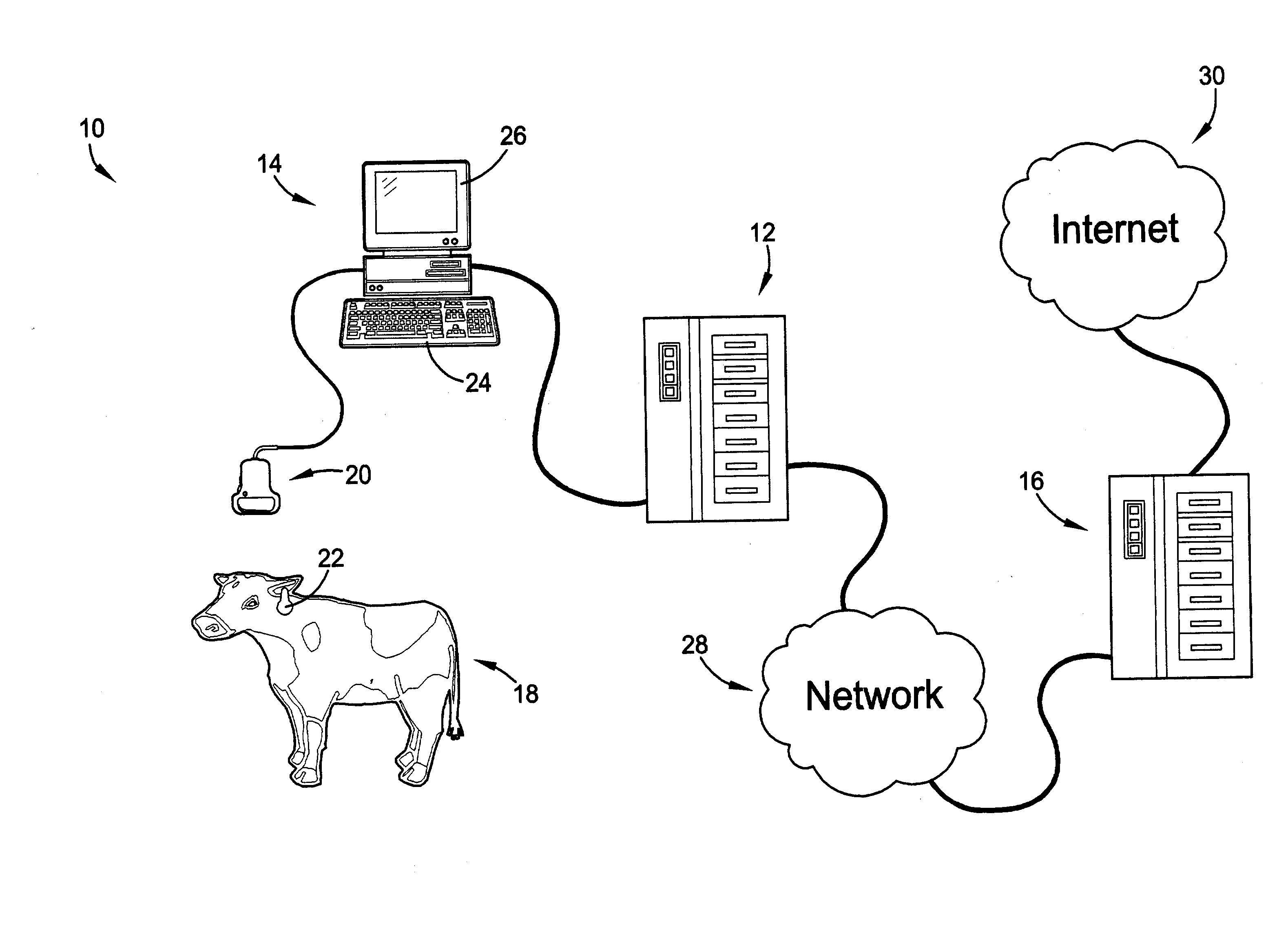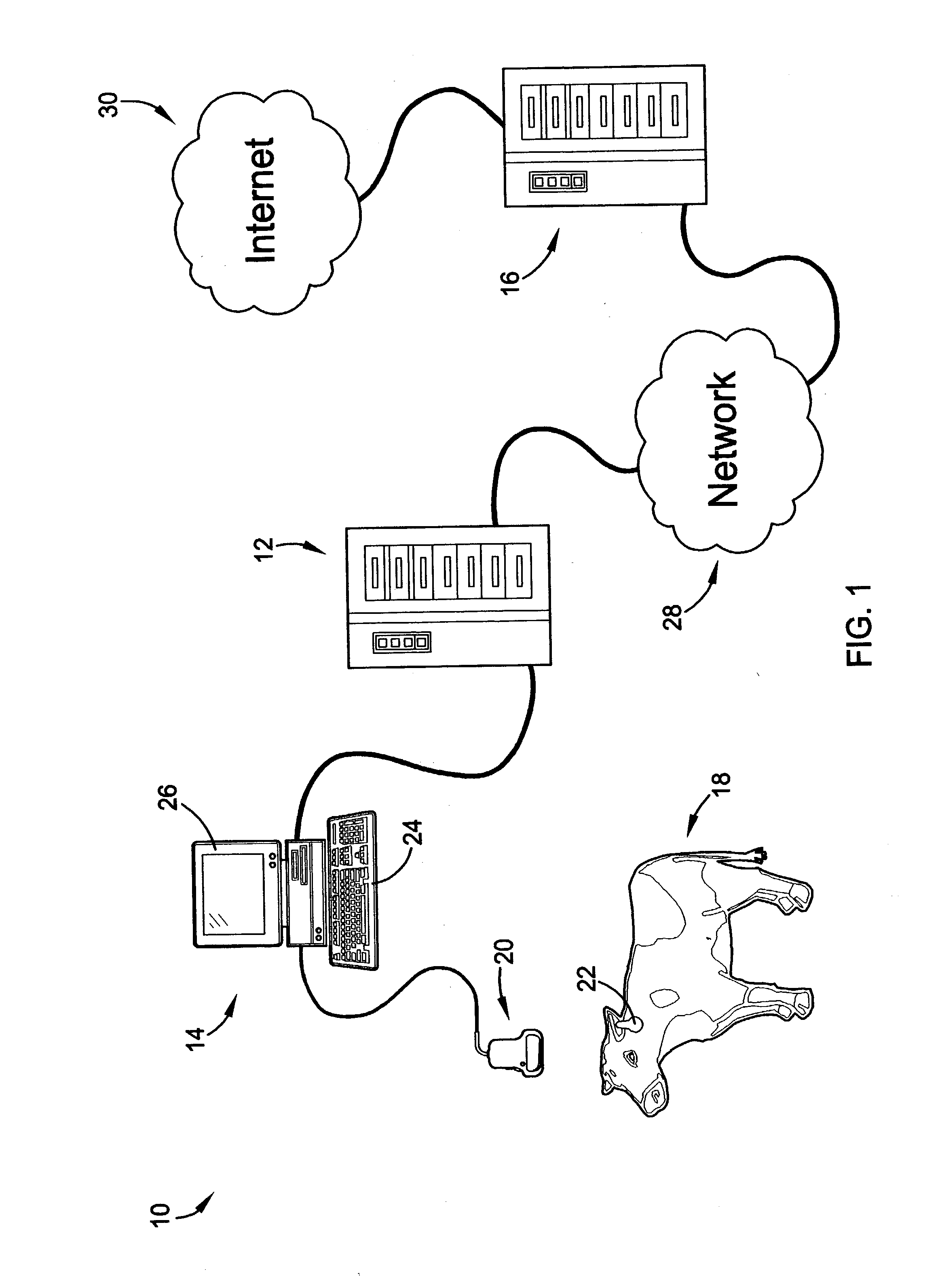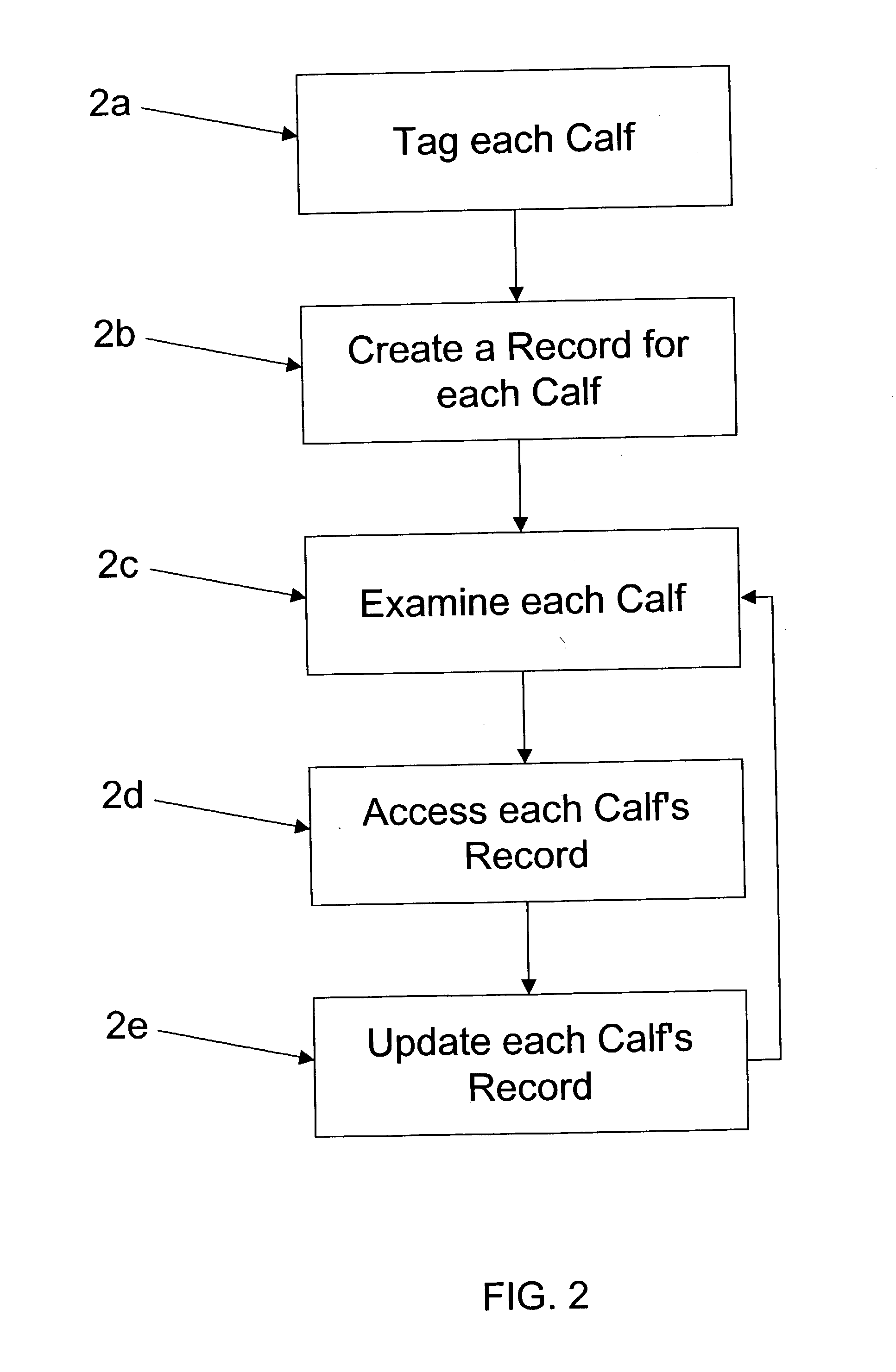Information system and method for gathering information relating to livestock
a technology of information system and livestock, applied in animal husbandry, instruments, butchery, etc., can solve the problems of inability to conveniently gather and share information relating to livestock, inability to analyze or share information in paper records, and high dependence on human effort in the process of gathering and manipulating information in paper records
- Summary
- Abstract
- Description
- Claims
- Application Information
AI Technical Summary
Benefits of technology
Problems solved by technology
Method used
Image
Examples
Embodiment Construction
[0036] Referring to FIG. 1, the preferred livestock information system 10 configured in accordance with a preferred embodiment of the present invention is illustrated and broadly comprises one or more site databases 12 each accessible by one or more site terminals 14 and a central database 16 or repository for storing information relating to each of a plurality of calves 18. The site databases 12 preferably utilize a conventional database engine, such as Oracle, Sybase, or Microsoft SQL Server. Each site database 12 preferably operates on a server, such as those available from Dell, IBM, and Compaq. Alternatively, each site database 12 may operate on a conventional personal computer (PC), such as those available from Gateway and Hewlett Packard.
[0037] The site databases 12 preferably store information about each calf 18 collected through the site terminals 14. The site terminals 14 preferably include or connect to a scanner 20 to scan each of a plurality of unique tags 22 attached t...
PUM
 Login to View More
Login to View More Abstract
Description
Claims
Application Information
 Login to View More
Login to View More - R&D
- Intellectual Property
- Life Sciences
- Materials
- Tech Scout
- Unparalleled Data Quality
- Higher Quality Content
- 60% Fewer Hallucinations
Browse by: Latest US Patents, China's latest patents, Technical Efficacy Thesaurus, Application Domain, Technology Topic, Popular Technical Reports.
© 2025 PatSnap. All rights reserved.Legal|Privacy policy|Modern Slavery Act Transparency Statement|Sitemap|About US| Contact US: help@patsnap.com



